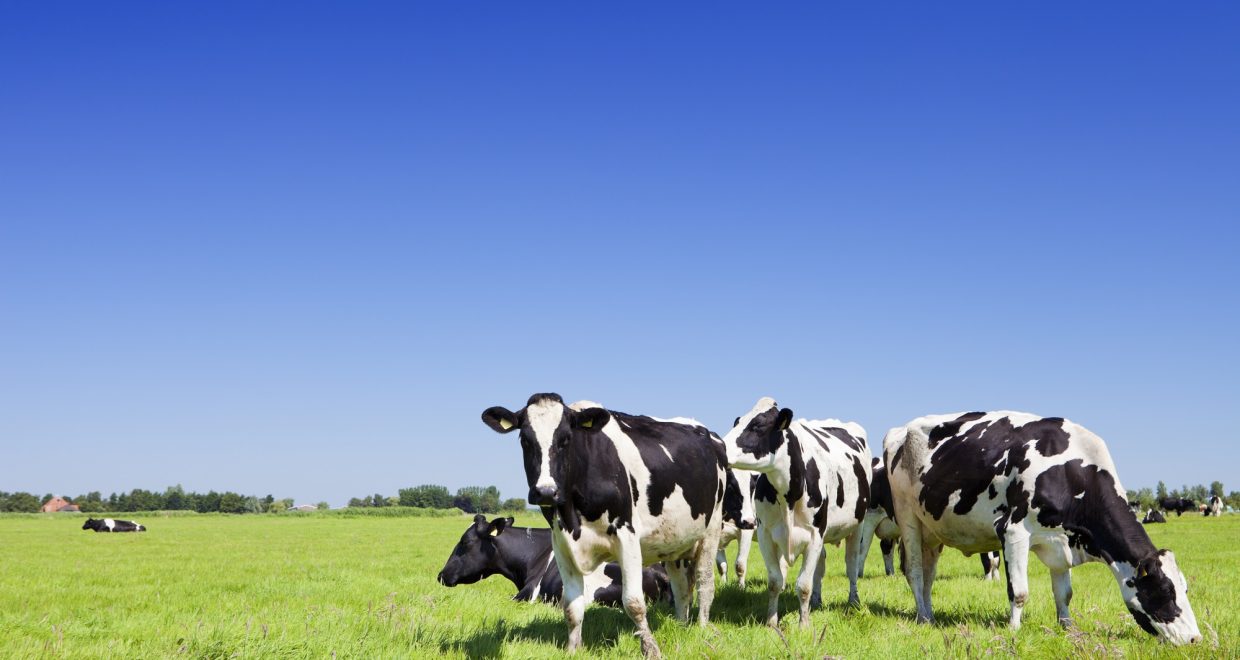Breath analysis offers a quick assay of methane output in dairy cows
The animal article of the month for May is entitled “Non-invasive individual methane measurement in dairy cows“. Authors: E. Negussie, J. Lehtinen, P. Mäntysaari, A. R. Bayat, A.-E. Liinamo, E. A. Mäntysaari and M. H. Lidauer
Methane (CH4) is a potent greenhouse gas that contributes to global warming. Methane in ruminants such as dairy cows is produced in the rumen and to some extent in the large intestines and 95% of which is exhaled via mouth and nose. Methane emission in dairy cows is not only concern for the environment it is also a loss of valuable feed energy because dairy cows lose about 2 to 12% of their gross energy as eructated CH4. Mitigation of CH4 emission from dairy systems is therefore important not only to reduce countries’ emission liabilities it may also improve animal productivity by converting the feed energy which would otherwise be lost as eructated CH4. Any attempt to lower CH4 and carbon footprint of milk production via breeding requires accurate measurement of CH4 in large-scale and on individual cows. So far, the lack of reliable techniques for the measurement of CH4 particularly from individual cows on large scale can be a hindrance to its mitigation. Besides, many of the available techniques to date are invasive, slow, expensive, labour intensive and are unsuitable for large-scale measurements. The main objective of this study was to examine and develop a non-invasive CH4 measurement system from the breath analysis in dairy cows.
The sampling and analysis of CH4 from the breath samples of cows used F10 which is a portable multigas analyser (Gasera Ltd, Turku, Finland) suitable for analysis of GHG from several sources. The analyser was fitted into the feeding kiosks close to the mouth where cows come to get their concentrate supplements. When a cow enters the kiosk, her breath was sampled and analysed for the contents of CH4, CO2 and acetone and her ID and the time she entered the kiosk automatically recorded. Every other minute cow’s breath was sampled and concentrations of the gasses recorded in the internal memory. Because kiosks are visited by cows several times during the day, fitting the analyser in the kiosks allowed the collection of several measurements per cow per day. These measurements were compared with those from established methods like cattle chamber and the average CH4 output per cow was 555 and 585 l/d, respectively. The slight difference between the two methods was due to cattle chamber captures all CH4 coming from both fore and hind gut fermentations whereas breath analysis measures only that comes from foregut fermentation and exhaled. The agreement between chamber and breath analysis was also assessed using concordance correlation analysis and showed average concordance correlation coefficient of 0.84 (95% CL of 0.65 to 0.93). This indicates that such breathe analysis techniques can be valuable to provide a quick assay of CH4 output on an individual animal basis and on a large scale at relatively low establishment and maintenance cost. The study recommends a better design to provide an ideal validation platform and developing correction factors to account for the loss from hind gut fermentation which could improve the agreement between the two methods.
This article is freely available for one month: Non-invasive individual methane measurement in dairy cows
Authors: E. Negussie, J. Lehtinen, P. Mäntysaari, A. R. Bayat, A.-E. Liinamo, E. A. Mäntysaari and M. H. Lidauer
The animal Article of the Month is selected by the Editor-in-Chief and is freely available for one month. View the recent selections






